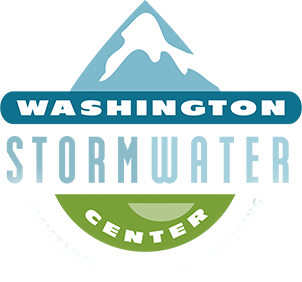The wet season is just around the corner, and your facility will soon be seeing discharge once again. It is important to remember that permittees are required to sample the first discharge off of their site after September 1st. This event, often referred to as the “first fall flush”, can present a number of challenges to Industrial facilities. These challenges include difficulty in predicting discharge, a larger pollutant load in the stormwater, and the need to be prepared to collect a sample at any time (while your facility is in normal operating hours).
Predicting discharge can oftentimes be more difficult during this time of year than it is during any other. This is due to the fact that most of the state hasn’t experienced much rainfall over the last few months, and conditions are especially dry. It sometimes takes a little extra rainfall volume to fill your system and achieve discharge. Storm events also tend to be a little more sporadic and unpredictable this time of year making discharge harder to predict.
When the rains do come, and discharge occurs, this storm often has the potential to have higher levels of pollutants. This is due to the fact that your facility has been operating all summer and pollutants have been accumulating on all uncleaned surfaces. When this first rain comes, this buildup of pollutants gets washed into your discharge and can lead to difficulty reaching your sampling benchmarks.
Below are 9 tips to help you navigate through these challenges and more:
1. Prepare your sampling equipment
The requirement to sample the first fall storm can mean that sampling can sneak up on you. It is important to be prepared. Ensure you have all your sampling equipment ready to go, including sample bottles, fresh pH paper or pH meter, turbidity meter, and any other necessary tools. Make sure your pH and turbidity meters are calibrated and that your calibration standards are not expired. Make sure your sampling kit is well stocked with powderless gloves, ziplock bags, and any other handling equipment you may need. Locate tools you may need such as a grate hook, allen wrench for catch basin cover, sampling pole, etc.
2. Clean, Clean, Clean
Cleaning up around your site is one of the easiest and most effective things you can do to prepare for the first fall storm. Take time to walk your site and look for any exposed raw material or junk laying around your site. If possible, move exposed materials under cover to avoid contact with stormwater. Properly dispose of any junk laying around your site, and make sure dumpster lids are closed. This cleanup will reduce exposure to potential pollutant-generating material around your site.
3. Conduct your staff education
This time of year presents an ideal opportunity to conduct your annual staff training for stormwater management. By revisiting permit requirements and the pollution prevention policies on your site, your staff will have a fresh reminder about their roles and responsibilities empowering them to identify, report, and mitigate pollution sources just in time for the first rain event.
4. Sweep all of your paved surfaces
Thoroughly sweep all of the paved surfaces at your facility. These surfaces collect debris and pollutants throughout the dry season which will be washed into your stormwater system when it begins to rain. Take extra time to sweep the harder-to-reach areas on your facility into the path of your sweeper truck. Sweep the areas that had material or junk stored (see tip 2). Getting into these hard-to-reach places can work wonders to reduce the pollutant load off of your site.
5. Maintain your catch basins and stormwater lines
You should inspect all of the catch basins on your site and perform any necessary maintenance on them. These have potentially been collecting debris all summer which could negatively affect your sampling results. Clean out any debris and consider jetting the lines. If your catch basin was fitted with a catch basin filter, consider replacing it if necessary.
6. Talk with your lab
It is important to talk with your lab and let them know you intend to sample. Go over the sampling/ handling procedures for the analytes you will be dropping off. Make sure you are up to date with their protocols, and request any additional bottles or other supplies they may provide. Labs will often see a big rush of samples during this first storm event, so everyone must be up to speed before the rain comes.
7. Consider expediting your lab results
You may want to consider expediting or “rushing” your lab results. This usually costs extra, but getting your results back in a timely manner can be critical in preventing a quarterly benchmark exceedance. If your first sample results come back over the benchmark value, expediting your results gives you additional time to clean up your site and sample again that quarter, allowing you to average your sample results and potentially bring your quarterly average below the benchmark.
8. Review the permit, your SWPPP, and your WQWebPortal
It is important to take this time to review the permit requirements and the SWPPP for your site. Remember that your SWPPP is a living document, so make changes that reflect your site. Review the timelines for your inspection, sampling, and reporting deadlines. Check your WQWebPortal to make sure your sampling requirements have not changed. Use this time to refresh your memory and make sure nothing falls through the cracks.
9. Maintain BMPs
Our final tip is to inspect and maintain all of the BMPs on your site. We touched on cleaning out your catch basins and replacing any catch basin filters you may have deployed. You should also inspect and touch up any painted zinc-coated surfaces. Open up your spill kits and replenish them if necessary. Media-based treatment BMPs may be due for a media replacement; investigate and replace if necessary. Some treatment systems may have had stagnant water in them all summer, it may be a good idea to flush that out. If you have any other BMPs, now may be a good time to review the manufactures recommended maintenance schedule and perform any recommended tasks.
Did you find this information helpful? Subscribe to our ISGP Update for more articles like this.
Also included in this issue: New Industrial Stormwater General Permit Coming Soon



